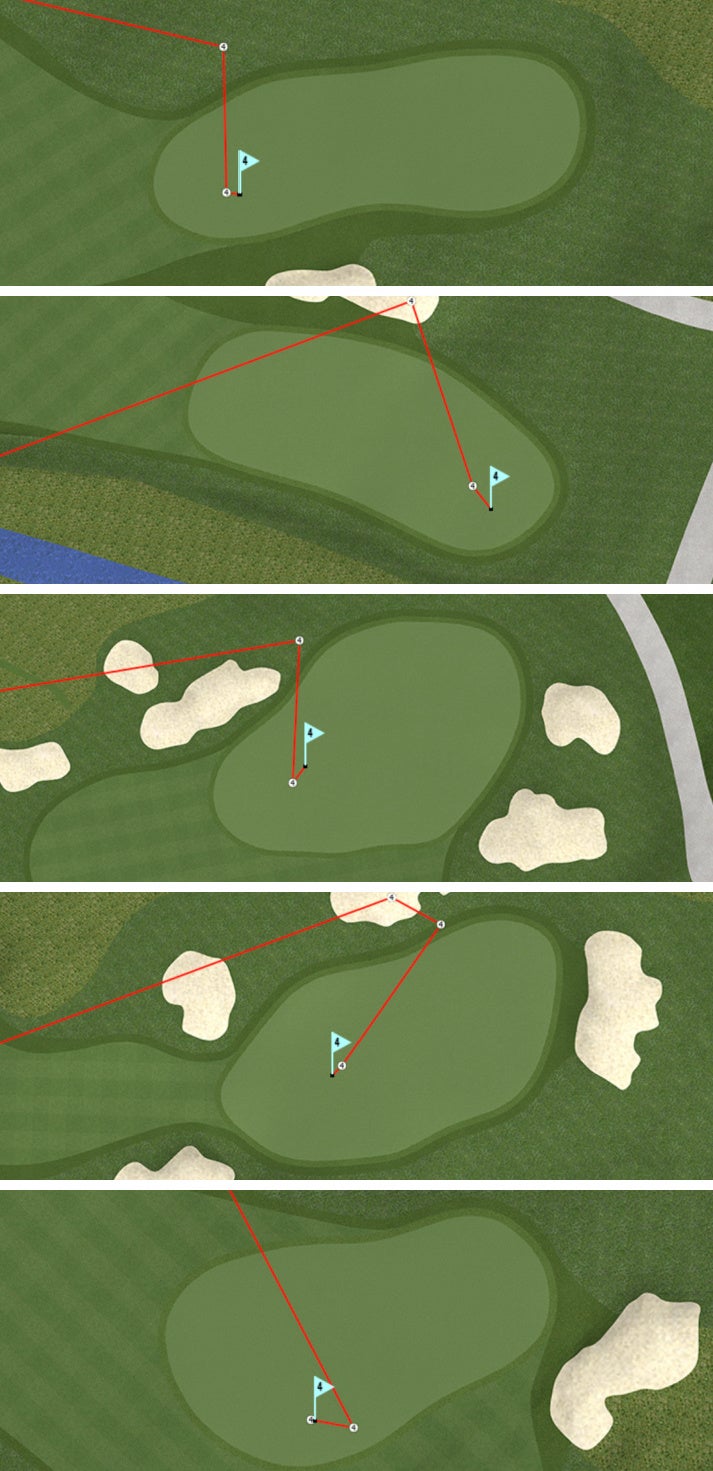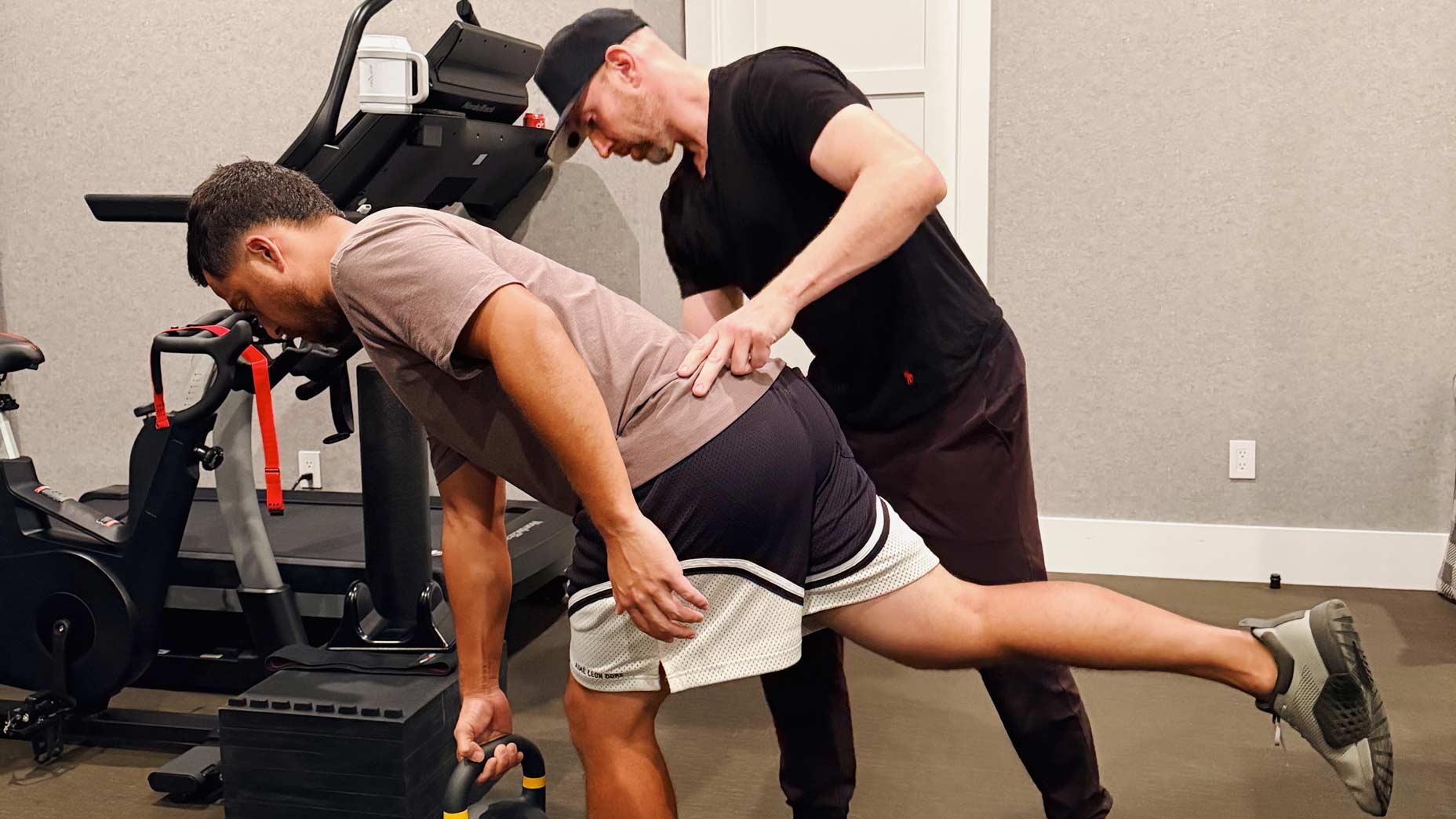Welcome to Play Smart, a game-improvement column that drops every Monday, Wednesday and Friday from Game Improvement Editor Luke Kerr-Dineen (who you can follow on Twitter right here).
Whenever we see a player mount any kind of come-from-behind victory, a hero narrative quickly emerges. Oftentimes for good reason. We saw it with Max Homa’s Wells Fargo Championship victory on Sunday: Starting a couple back from Keegan Bradley, he stuck three shots inside 10 feet in his first 10 holes and birdied each of them.
‘Come on!’: Max Homa holds off Keegan Bradley for victory on Mother’s DayBy: Sean Zak
Clutch! Stud! Hero!
But while it’s true Homa’s play, in this case, befitted a victory that he ultimately secured, focusing solely on the most glamorous stuff doesn’t actually paint the fullest picture of why winners actually win. In the case of Homa, he didn’t walk away with the trophy only because of the quality of his good shots. He did so because he navigated a bout of tricky turbulence midway through his round like a player who, quite frankly, looks ready to win major championships.
The stretch came on holes 10 through 14, when Homa missed three of the five greens in regulation. The two that he hit came on the par-5 10th hole and the reachable par-4 14th hole. He didn’t hit any of these shots perfectly, but there’s a common thread that ties them all together, and in each occasion, allowed Homa used it to cover for the natural ups-and-downs of a round of golf, and win anyway.
Avoiding the short-sided miss

As a general rule of thumb, pros try to avoid at all costs the short-sided miss, which is when you miss the green in the spot closest to the pin. On the surface this would sound like a good thing — why wouldn’t you want to miss the green as close to the hole as possible? — but in reality, missing on the short side limits your options. It means that you’ve essentially only got one shot to choose from on your chip: A high flop shot. Something that gets up fast and stops quickly. Even when you’re good at hitting this difficult shot, when you consider all the other factors, like slope or the lie, golfers almost always do better with a low-maintenance shot where they have more green to worth with.
Which brings us to the five-hole stretch where Homa felt his momentum start to stall somewhat, as he said in his press conference afterward. But while he may not have been hitting shots up to his ordinarily high standard, on each occasion he still left himself the long-side miss.
- Pin-high left miss to the front right pin on 10
- Short-left miss to the back-right pin on 11
- Long left miss to front left pin on 12
- Long right miss to front middle pin on 13
- Pin-high left approach to front right pin on 14
Homa would’ve obviously preferred to have hit his shots onto the green, but his clever strategizing left him with straightforward (relatively speaking) up-and-downs, like you see below.
And as the old cliche goes, if golf is a game of misses, it’s those misses that underline the quality of Homa’s overall play from tee-to-green. He’s not just missing in spots that give him in high percentage up-and-down opportunities — which is something his GOLF Top 100 Teacher Mark Blackburn works steadfastly on with all his players — but in a predictable manner. It’s no coincidence that each of these shots ended slightly left of their presumed target, and even though the direction was off, his distance control was still operating within fine margins.
Players less skilled or less smart that Homa could’ve seen the tournament slip away during this stretch. But Homa escaped the wobble in even par — his only bogey stemming from a bunker shot from an awkward lie that he got slightly too cute with.
And ultimately it was enduring those holes that got him to the 15th hole, which he birdied, and turned the tide in his favor.
“That felt like a big turning point because I finally felt confidence,” he said. “I’ve watched enough golf fortunately to know it’s not going to be linear, it’s not going to be easy.”











